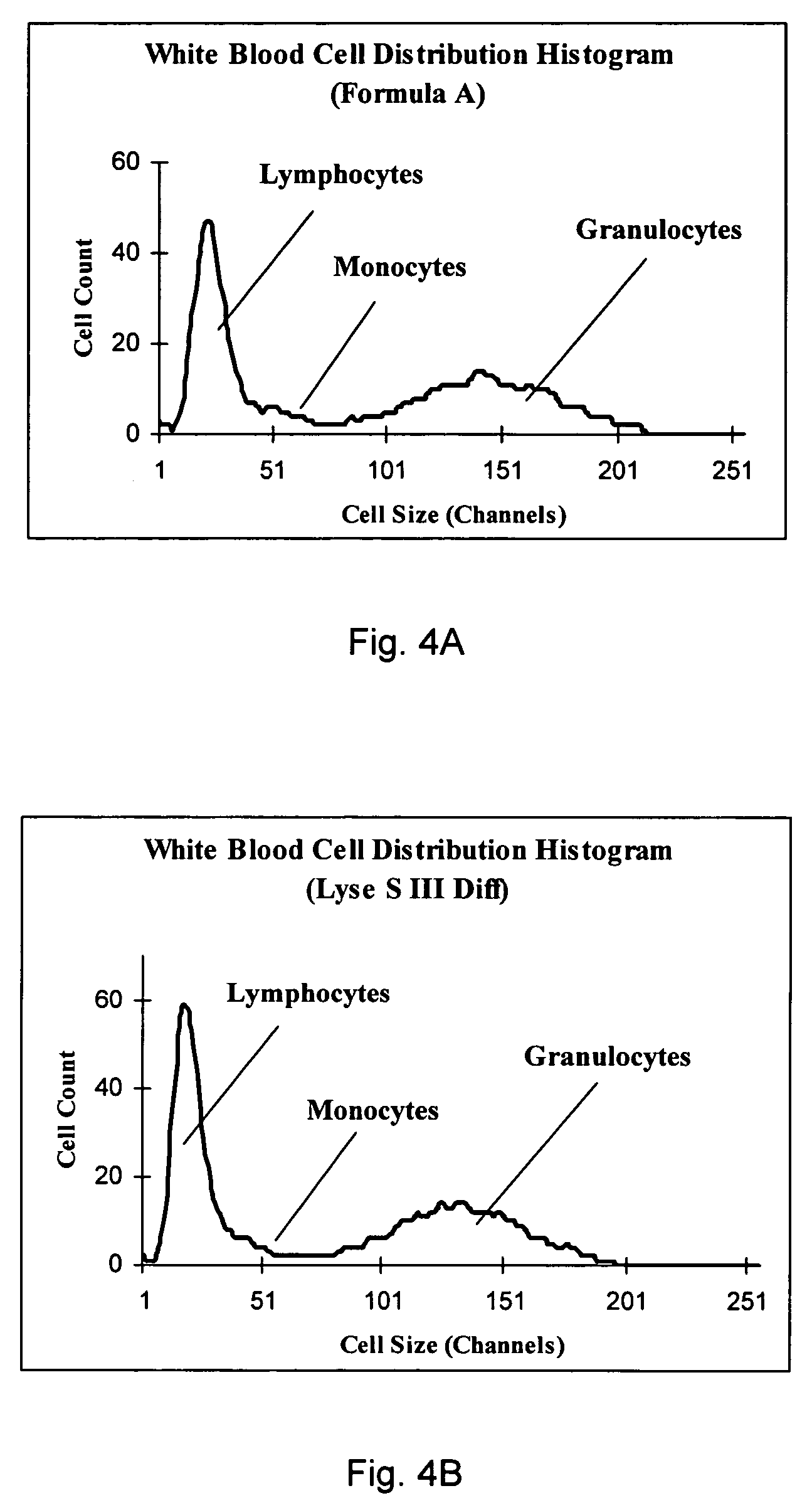Cyanide-free lytic reagent composition and method of use for hemoglobin and white blood cell measurement
a cyanide-free, lytic technology, applied in the direction of instruments, chemical methods analysis, dead animals, etc., can solve the problems of reagent waste, enormous environmental concern, and inability to analyze white blood cells simultaneously with hemoglobin measurement,
- Summary
- Abstract
- Description
- Claims
- Application Information
AI Technical Summary
Benefits of technology
Problems solved by technology
Method used
Image
Examples
example 1
[0064]The following lytic reagent compositions were prepared.
[0065]
Formula A1,2-diaminocyclohexane10.0gdodecyltrimethylammonium chloride (50% solution)35.6gcetyldimethylethylammonium bromide1.25gdistilled water adjusted to 1 literpH5.5Formula B3,6-dihyroxypyridazine10.0gdodecyltrimethylammonium chloride (50% solution)50.0gtetradecyltrimethylammonium bromide3.5gdistilled water adjusted to 1 literpH6.0
example 2
[0066]
Formula C1,2-diaminocyclohexane16.8gdodecyltrimethylammonium chloride (50% solution)35.5gcetyldimethylethylammonium bromide2.0gdistilled water adjusted to 1 literpH5.5
[0067]11.6 μl of a whole blood sample was diluted by 2500 μl of ISOTON® 3E, then 403 μl of a lytic reagent composition of Formula C was mixed manually with the prediluted sample. The absorption spectrum of the sample mixture was measured immediately on a Beckman DU 7500 spectrophotometer. FIG. 1 shows a total of 12 spectra of the blood samples treated according to above procedure using Formula C. The spectra were acquired from 12 seconds after the addition of the lytic reagent composition with an interval of 10 seconds.
example 3
[0068]111 blood samples, their hemoglobin concentration ranging from 6 to 17 g / dL and white blood cell count ranging from 1,000 μL to 40,000 μL, were analyzed on a calibrated COULTER® LH750 instrument under standard instrument configuration except for the lytic reagent being replaced by Formula A. These sample were also analyzed on another reference LH750 instrument, which used LYSE S® III diff as the lytic reagent. More than 50 percent of the samples were clinical samples including various clinical conditions.
[0069]FIG. 2 shows the correlation of the hemoglobin concentration between the results obtained using Formula A and the results obtained on the reference instrument. FIG. 3 shows the correlation of the numbers of white blood cells (reported as WBC in 103 / μL) between the results obtained using Formula A and the results obtained on the reference instrument.
[0070]FIGS. 4A and 4B show the white blood cell distribution histograms of one blood sample obtained on the instrument using...
PUM
| Property | Measurement | Unit |
|---|---|---|
| concentration | aaaaa | aaaaa |
| concentration | aaaaa | aaaaa |
| concentration | aaaaa | aaaaa |
Abstract
Description
Claims
Application Information
 Login to View More
Login to View More - R&D
- Intellectual Property
- Life Sciences
- Materials
- Tech Scout
- Unparalleled Data Quality
- Higher Quality Content
- 60% Fewer Hallucinations
Browse by: Latest US Patents, China's latest patents, Technical Efficacy Thesaurus, Application Domain, Technology Topic, Popular Technical Reports.
© 2025 PatSnap. All rights reserved.Legal|Privacy policy|Modern Slavery Act Transparency Statement|Sitemap|About US| Contact US: help@patsnap.com



